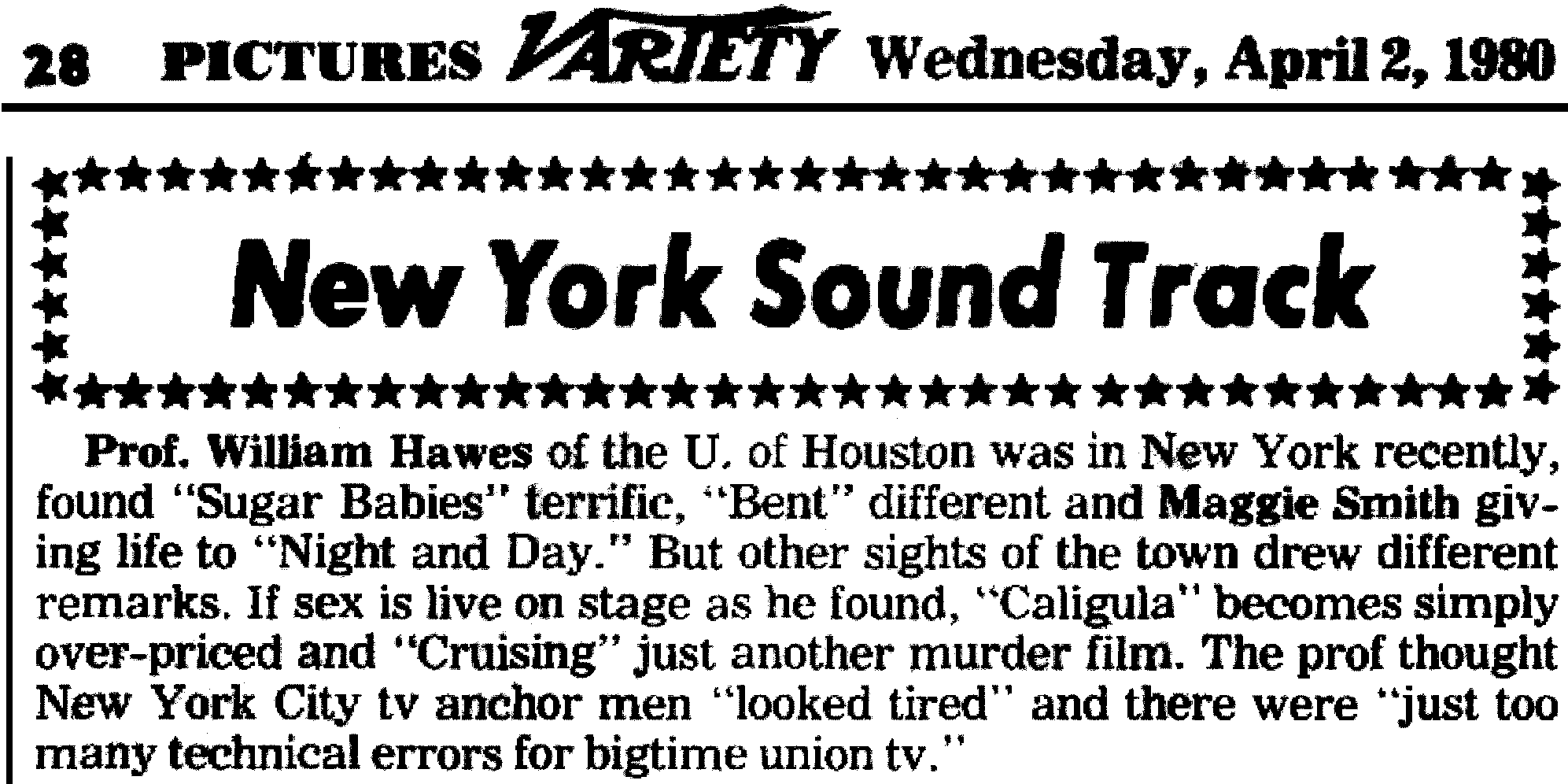

The first publication of the bizarre novelization authored by William Pseudonym.
It’s surprising that a mainstream publisher would issue a book with such sexually extreme passages.
Yet as we shall see, several other mainstream publishers followed suit.
Gore Vidal got quite hot under the collar when he discovered the novelization, and who can blame him?
He sued, and the matter was settled out of court on 31 May 1979, though with so many loopholes and missing signatories
that I’m surprised anybody agreed to the settlement.
The result was the edition below, which was essentially the same but which deleted every mention of Gore Vidal.
Incidentally, used copies of the above edition are currently on Amazon.com,
going for prices ranging between $3.12 and $999.99. Why? |
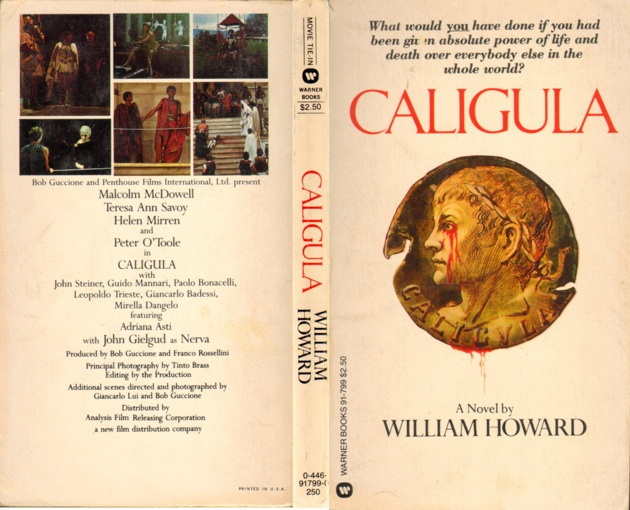
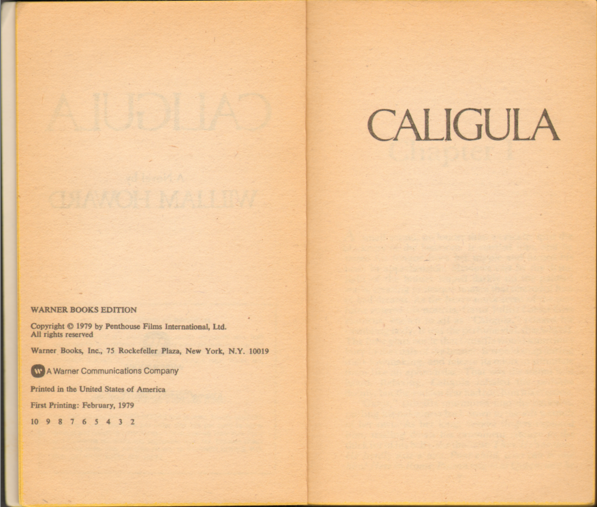
I have seen only three copies of this book.
The copyright page indicates that this is the second press run of the first edition, but as you can see the ISBN is different.
So something is very strange. A second press run of a first edition should not have a different ISBN.
But since the title is different, this should be a first press run of a second edition. Oy.
Considering that the back cover mentions Analysis Film Releasing Corporation, this press run could not have been created prior to February 1980.
I just did some Internet searches on the ISBN and it comes up as “INVALID.”
So I wonder if this press run of the paperback was a rejected edition,
and if the copy I found on the “Recent Arrivals” shelf
at Jerry Lane’s Book Stop at Nob Hill in Albuquerque way back in 1980 or thereabouts
was a rogue copy that should never have been released to the public. Maybe?
Apart from the copy I found at Jerry’s shop, the only two copies I saw were in Giancarlo Lui’s collection and in Penthouse’s collection.
So I assume that this was never released to the general public. |
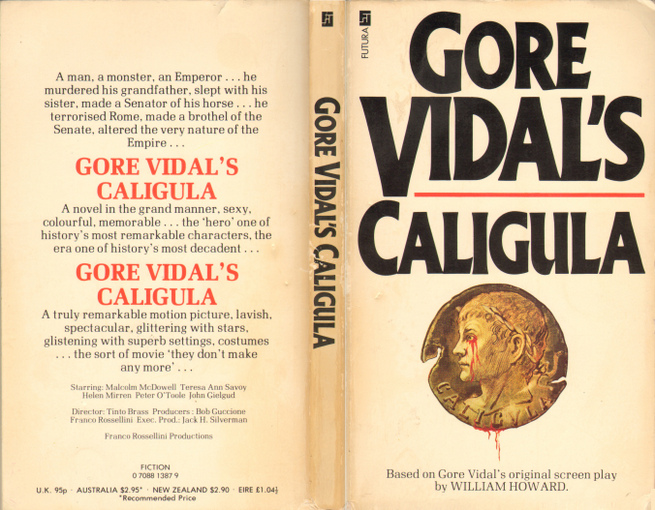
This is the British edition from May 1979, without any illustrations.
Penthouse is mentioned only in small print on the copyright page, and nowhere else. |
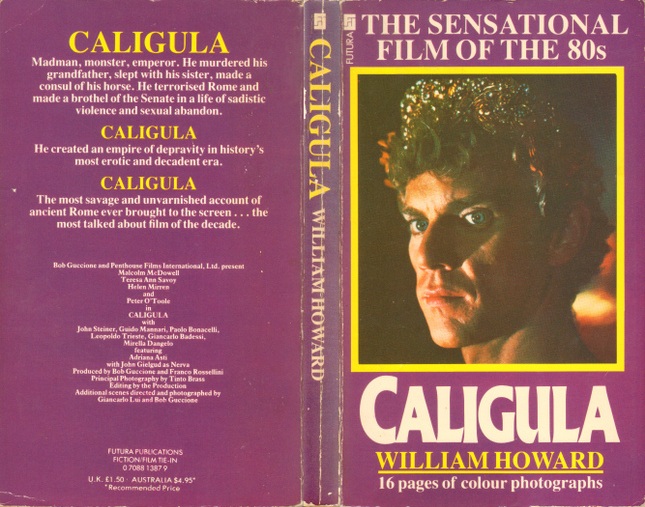
It must have been around the time of the British release (end of October 1980)
that this new edition came out, with color photos.
You’ll notice that this has the same ISBN as the earlier edition. Why? |
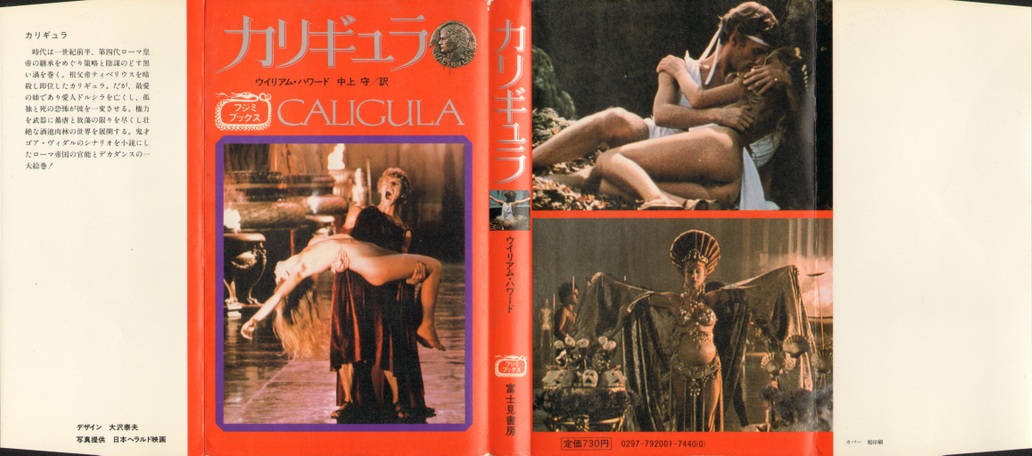
I did not know until recently that there was a Japanese translation of this book.
It was probably issued at about the time of the Japanese release, 21 November 1980.
(Tokyō: Fujimi Shobō, Shōwa 55, 1980.)
Actually, I discovered later that there were TWO Japanese editions.
The above, with the red cover, was the “men’s” edition.
There was a slightly smaller edition, with a blue cover, which was the “women’s” edition. |
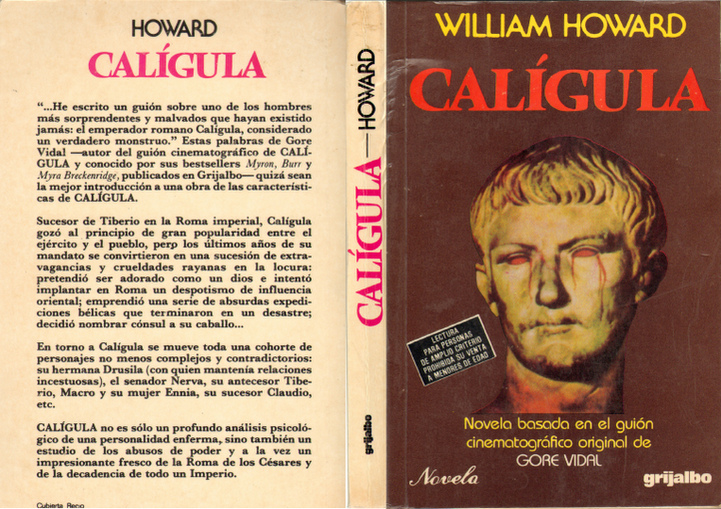
Translated by J.J. Álvares Flores and Ángela Pérez.
The Barcelona/México/Buenos Aires copyright date is given as 1981.
Look at that back cover.
Gore’s regular Latin-American publisher was Grijalbo.
He should have canceled his Grijalbo contract and sued — but he never knew about this. |

Grijalbo reissued the book on cheaper paper sometime later.
The copyright page is identical to the previous edition, with the same ISBN. Why?
This new edition was not printed from the original film sheets,
but from new mechanicals shot from the original edition.
Sheesh.
The cover design indicates that the BBC TV series I, Claudius
must have gained popularity in México by this time. |
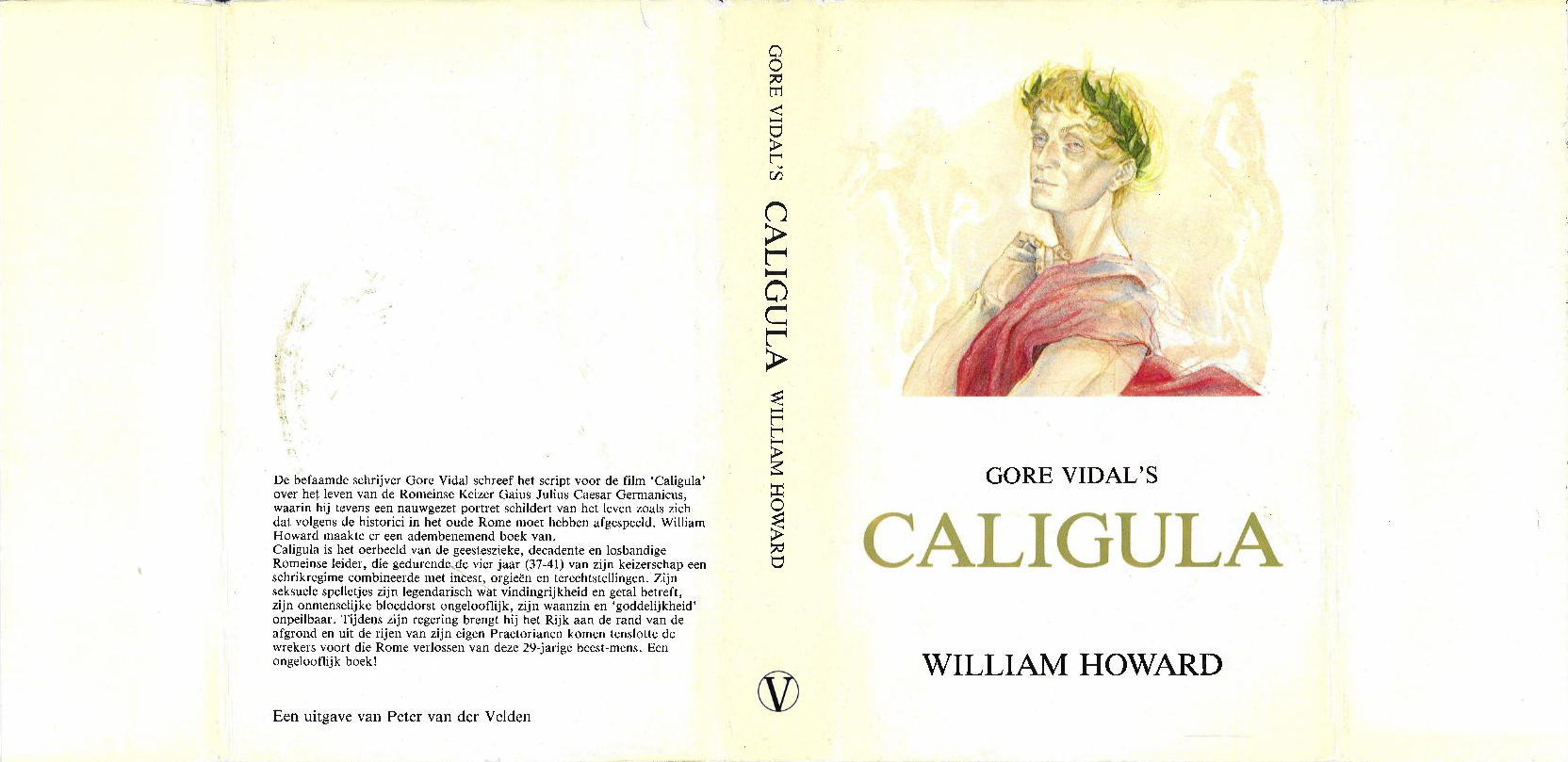
There was also a Dutch translation
(translated by Marjan Hilverda, Amsterdam: Peter Van der Velden, 1980; ISBN 9789065210197 [hardback])... |

...as well as a German translation
(Caligula: Roman, translated by Alfred Dunkel, München: Heyne, 1980;
ISBN |
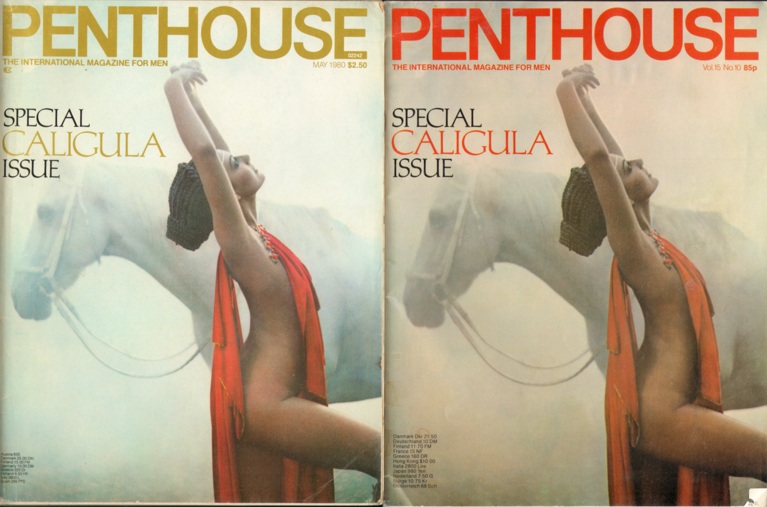
The April 1980 US Penthouse is the special Caligula issue,
and it’s chock-full of images that had been deleted from the final film.
The Caligula sections were later issued in the UK Penthouse in January 1981
Some copies of the UK edition were mistakenly printed with a different cover,
featuring a Stan Malinowski photo of Corinne Alphen.
That error was quickly corrected.
The Caligula articles and pictorials were also issued
in the July 1980 German edition and the July 1980 Australian edition.
The Spanish edition from September 1980 was quite different and had photos I’ve never seen elsewhere.
Guccione had signed an out-of-court settlement a year earlier
promising not to mention Gore Vidal in any connection with Caligula,
except to say, only in passing, that he had written an earlier screenplay on the topic.
Guccione completely violated that settlement agreement, repeatedly, in this issue.
Gore never sued because he never knew.
I can hear lawyers around the globe triumphantly shouting among themselves,
“Precedent!!! Precedent!!! Precedent!!!” |

This was issued in France, though we don’t know when.
It was called Serie-Rouge N°92 Caligula
and apart from the illustration on the front cover, it has absolutely nothing to do with the movie.
|
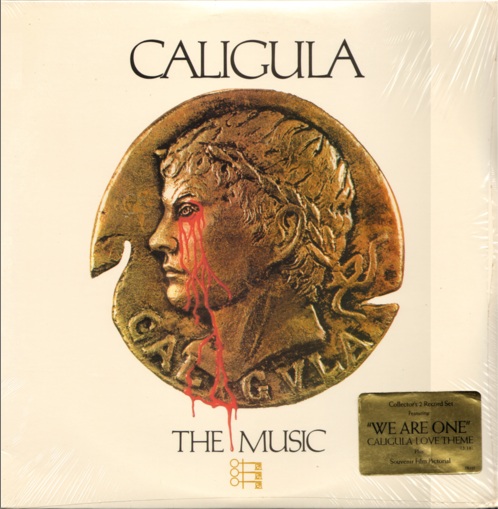
On or about 14 November 1980, Penthouse Records released this peculiar soundtrack LP,
which featured some but not all of the music in the movie, as well as one piece that never made it into the movie.
It was a two-disc set, and the first disc consisted only of one brief piece on each side.
Specifically, Side A was a rock piece derived from Khachaturian’s Spartacus
with lyrics penned by Toni Biggs (Bob Guccione’s daughter) with vocals by Lydia Van Huston.
(Lydia used several different surnames. When I dig through my files I’ll collect them all and enumerate them here.)
Side B was similar, but it was a disco version.
This original soundtrack album was also issued on |
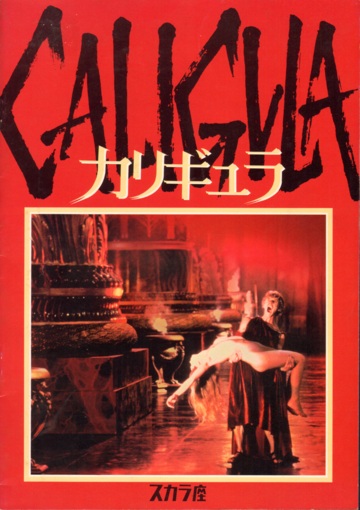
This souvenir brochure was, I suppose, issued together with the Japanese release,
21 November 1980. I guess. |
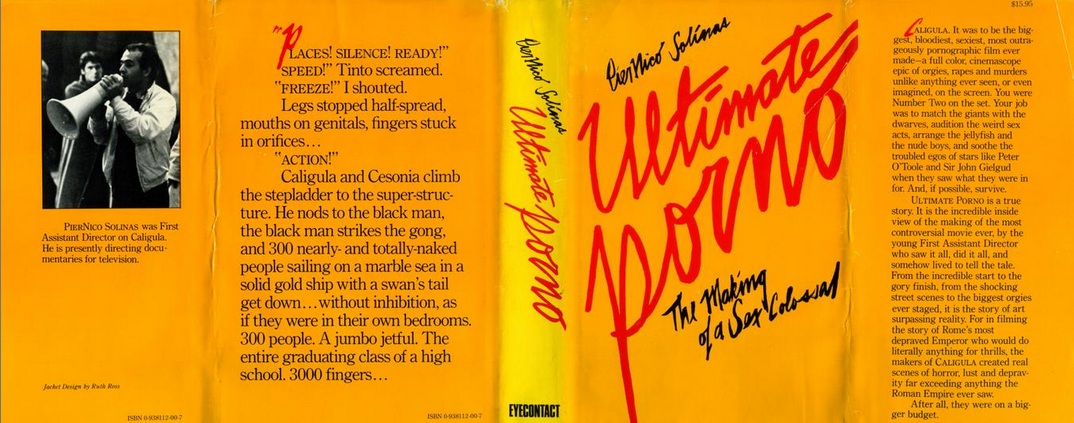
Assistant Director Piernico Solinas kept a diary during his Caligula gig, and after many drafts he turned that diary into a book.
(And no, Louis Rossetto of Wired fame did not coauthor it; he merely copy-edited a few sections.)
Almost every time this book delivers a juicy piece of information that helps to make sense of otherwise senseless data,
I discover that it just doesn’t hold up.
I have enough evidence in my massive collection to prove a number of passages in Ultimate Porno wrong:
Proculus left dangling 10 meters in the air during a strike vote? Never happened.
The aforementioned strike in October 1976? Never happened.
Franco Rossellini’s letter to Il Tempo in response to the strike? Never happened.
The book tells its tale chronologically, and yet the sequence of events is almost all wrong.
Those are just a few examples. There are more.
Yet it’s certainly an entertaining read. No doubt about it.
Yes, I do admit that there are a few important, invaluable passages here and there that bear the unmistakable stamp of authenticity.
For those few passages I am infinitely grateful.
I would pay to read Solinas’s original manuscript.
Better yet, I would like to read his original diary!
Until just a couple of years ago, copies of Ultimate Porno were easily available on the used market for around $20 or $25.
Then suddenly, overnight, sometime around 2009, everybody jacked up the prices to between about $80 and $300.
This is insanity.
I hope that not a single copy of the book ever sold for more than $25,
and that any copy with a higher price tag has been collecting dust and will continue to do so.
(There was supposedly a trade-paperback edition of this book |
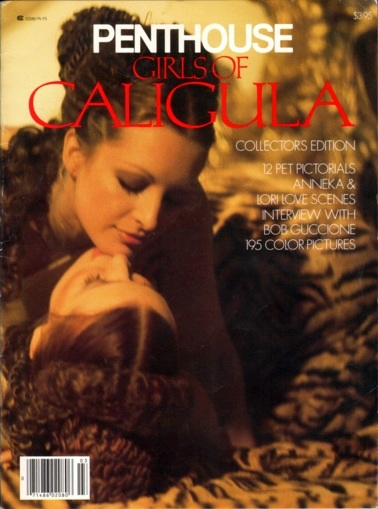
This was issued sometime between |

Then there’s this oddball paperback available only in Argentina, and which no seller will ship outside the borders.
By means of some sort of supernatural abilities, a Belgian friend was able to round up a copy for me,
which arrived on Wednesday, 7 November 2012.
At long last I have this tiny, tiny, tiny little book in my hands.
And it is tiny, 4¼" × 6¾", 189 pages plus advertisements.
The book was originally copyrighted by its New York City author Stuart Green in 1980 under its original title, Gaius Caligula Caesar,
but remained unpublished until this Castilian translation in 1985, copyrighted by RR Ediciones S.r.l. in Buenos Aires.
Though I’ve been surrounded by Spanish speakers more than half my life, I never learned the language.
Nonetheless, I can gather a little bit, and so I thumbed through this little novel and it seems to bear no resemblance whatsoever to the movie.
This was just another novel about the guy.
So why was it published with two stills from the film on the covers?
Well, the movie Caligula was first shown in Argentina in late February 1985.
RR Ediciones at that time had the rights to the Castilian translation of Stuart Green’s novel Calígula.
Why not jump onto the bandwagon?
All RR Ediciones needed to do was license two stills from the movie, probably from a third party, slap them onto the covers,
et voilà!, a movie Stuart Green remains a bit of a mystery. Abe Books, Amazon, and WorldCat reveal several authors with similar names, but not this particular Stuart Green. And yet he has been published, for the final page of this Calígula book is an advertisement for his subsequent book, Memorias de una Masajista (Memoirs of a Masseuse). RR Ediciones published the Castilian translation of this as well. According to the advertisement, this 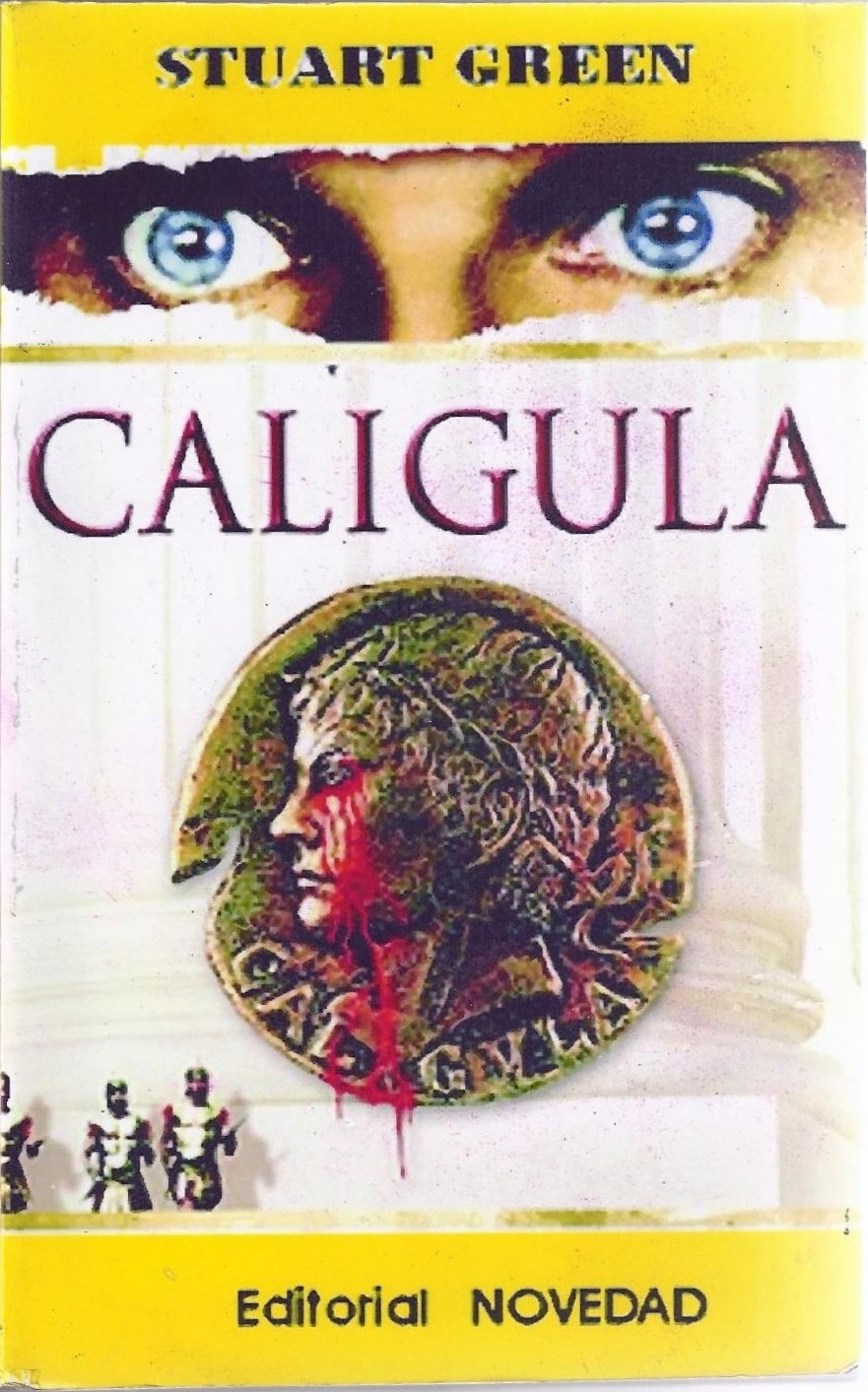 Of course, it only follows that there would be a Stuart Green Imperial Edition, yes?
I just got a lead from a reader in Australia, whose first name I’m sure you can guess.
¿Curious, que no? Well, that led me to one further Google search, and I found this:
|

A Brazilian 2nd edition of the novelization, with a title that violated Penthouse’s settlement with Vidal.
No idea what the 1st edition looked like.
If you have a Brazilian edition for sale, it would be nice if you’d sell it to me.
|

The settlement agreement with Gore Vidal put an end to the plans for releasing Giancarlo Lui’s promotional film.
Well, like I said, there were loopholes in that settlement agreement.
A |
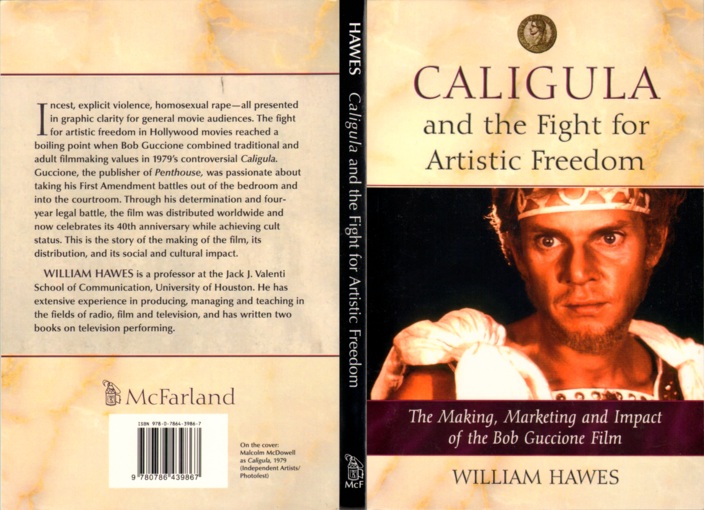
The latest is this very strange little book, released on 18 November 2008, by Professor William Hawes.
He couldn’t have spent more than a few days on research.
Much of his book has nothing to do with Caligula, and most of what it does say about Caligula is wrong.
This book seems to have the blessings of Penthouse.
This was apparently written as part of the “publish-or-perish” program.
There have been only three reviews to my knowledge.
One was not so much a review as a puff-piece interview:
Mauricio Barragan,
“Professor explores ‘Caligula,’ ”
The Daily Cougar (University of Houston student newspaper), 30 March 2009.
It elicited no comments.
The other review is exceedingly brief, by an Amazon customer who goes by the alias Robprince,
and you can find it here.
Finally there is Brett Taylor’s review in Video Watchdog no 159 (November/December 2010), which I have not read.
Considering the ebullient praises of the film in Hawes’s book, the following news item comes as a bit of a surprise:
|
